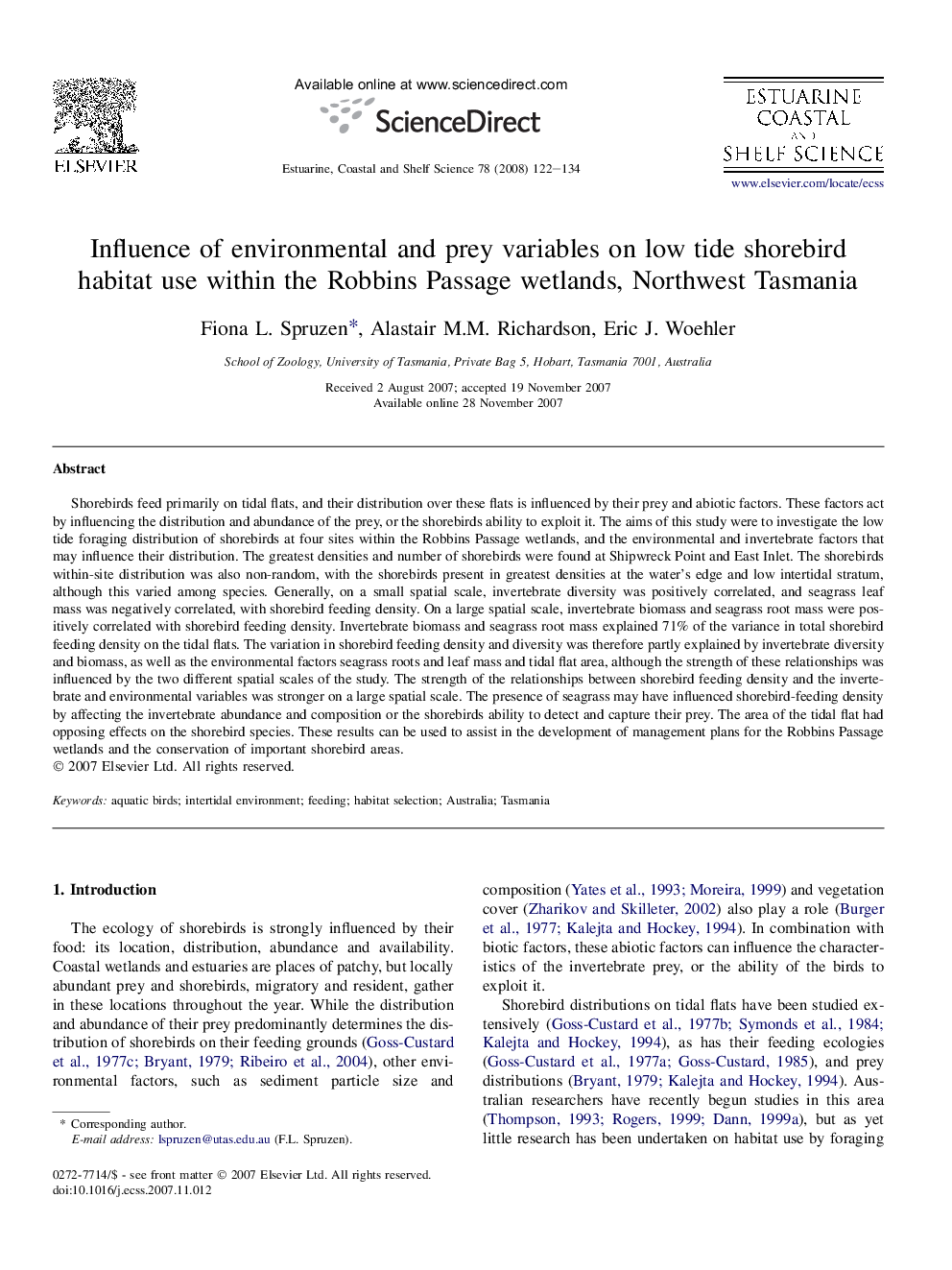| کد مقاله | کد نشریه | سال انتشار | مقاله انگلیسی | نسخه تمام متن |
|---|---|---|---|---|
| 4541457 | 1326725 | 2008 | 13 صفحه PDF | دانلود رایگان |

Shorebirds feed primarily on tidal flats, and their distribution over these flats is influenced by their prey and abiotic factors. These factors act by influencing the distribution and abundance of the prey, or the shorebirds ability to exploit it. The aims of this study were to investigate the low tide foraging distribution of shorebirds at four sites within the Robbins Passage wetlands, and the environmental and invertebrate factors that may influence their distribution. The greatest densities and number of shorebirds were found at Shipwreck Point and East Inlet. The shorebirds within-site distribution was also non-random, with the shorebirds present in greatest densities at the water's edge and low intertidal stratum, although this varied among species. Generally, on a small spatial scale, invertebrate diversity was positively correlated, and seagrass leaf mass was negatively correlated, with shorebird feeding density. On a large spatial scale, invertebrate biomass and seagrass root mass were positively correlated with shorebird feeding density. Invertebrate biomass and seagrass root mass explained 71% of the variance in total shorebird feeding density on the tidal flats. The variation in shorebird feeding density and diversity was therefore partly explained by invertebrate diversity and biomass, as well as the environmental factors seagrass roots and leaf mass and tidal flat area, although the strength of these relationships was influenced by the two different spatial scales of the study. The strength of the relationships between shorebird feeding density and the invertebrate and environmental variables was stronger on a large spatial scale. The presence of seagrass may have influenced shorebird-feeding density by affecting the invertebrate abundance and composition or the shorebirds ability to detect and capture their prey. The area of the tidal flat had opposing effects on the shorebird species. These results can be used to assist in the development of management plans for the Robbins Passage wetlands and the conservation of important shorebird areas.
Journal: Estuarine, Coastal and Shelf Science - Volume 78, Issue 1, 1 June 2008, Pages 122–134